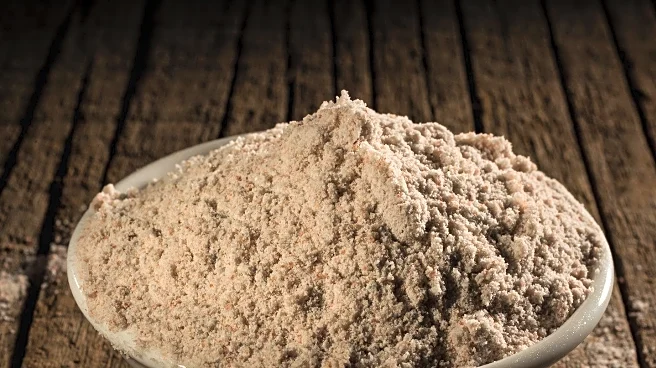What's Happening?
Recent findings have highlighted the presence of microplastics in common kitchen items, raising health concerns. Microplastics, which are particles less than 5mm in length, have been found in food storage
containers, utensils, and even tea bags. Studies suggest that these particles can enter the human body through food and beverages, potentially leading to health issues such as cell damage and weakened immune systems. The release of microplastics is particularly high when plastic containers are heated in microwaves. As a result, there is a growing trend towards replacing plastic kitchenware with alternatives made from glass, metal, or wood, which are considered safer for food contact.
Why It's Important?
The presence of microplastics in kitchenware is significant due to its potential impact on public health. As Americans consume thousands of microplastic particles annually, the long-term health effects are a growing concern. The shift towards non-plastic alternatives could reduce exposure to these particles, potentially decreasing the risk of associated health problems. This trend also reflects a broader movement towards sustainable and health-conscious consumer choices. Manufacturers and retailers may see increased demand for glass and metal kitchen products, influencing market dynamics and product offerings.
What's Next?
As awareness of microplastic contamination grows, consumers are likely to continue seeking safer kitchenware options. This could lead to increased innovation and availability of non-plastic products in the market. Regulatory bodies might also consider implementing stricter guidelines on the use of plastics in food-related products. Additionally, further research into the health effects of microplastics could inform future public health recommendations and policies.
Beyond the Headlines
The issue of microplastics in kitchenware also touches on environmental concerns, as plastic waste contributes to pollution. By opting for sustainable alternatives, consumers can play a role in reducing plastic waste. This shift may also encourage companies to adopt more environmentally friendly practices in their production processes, potentially leading to broader environmental benefits.











